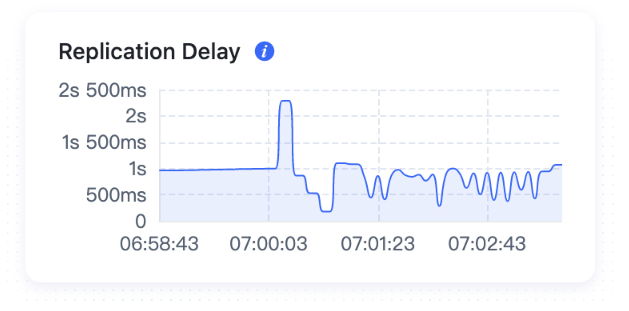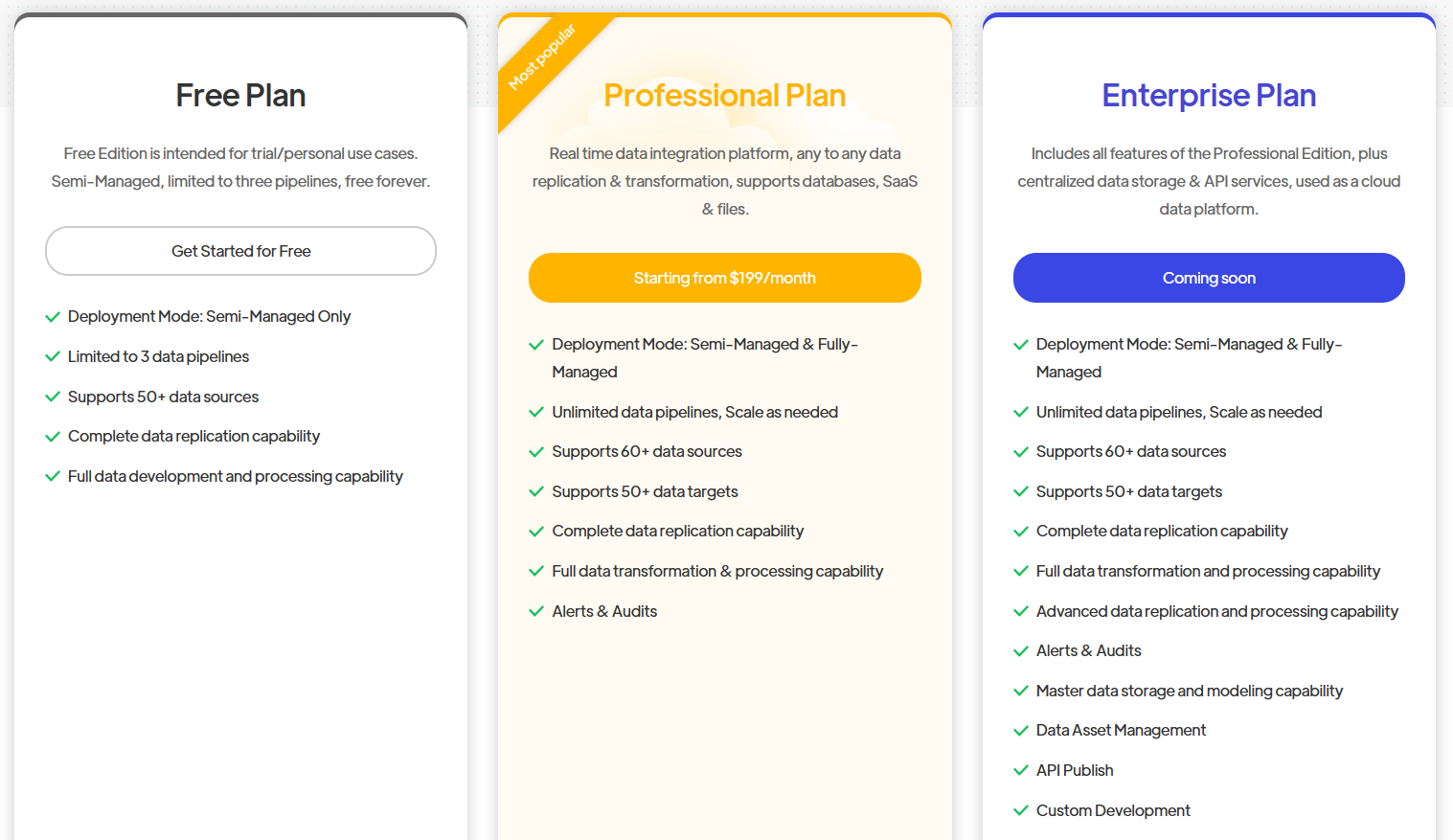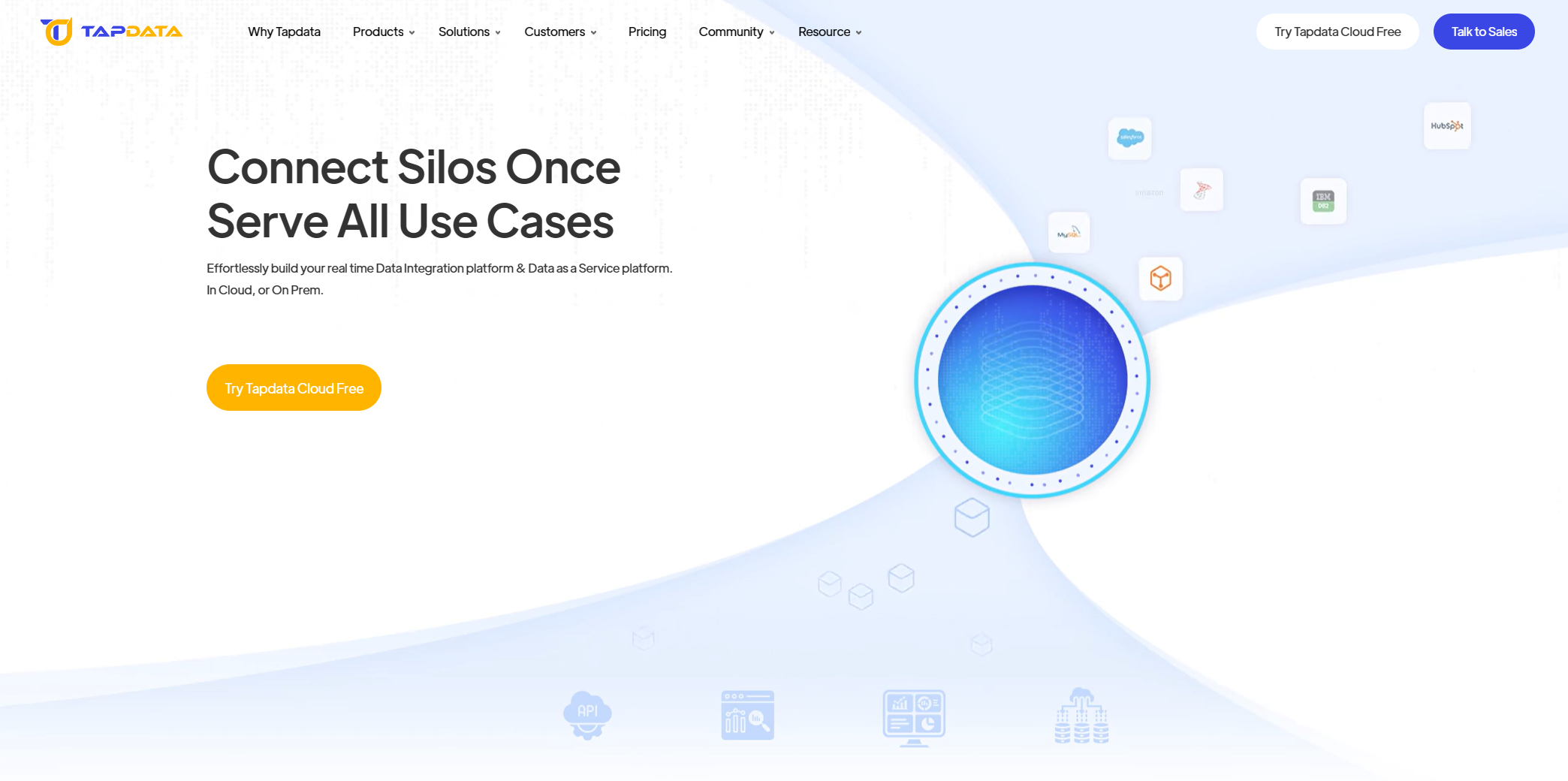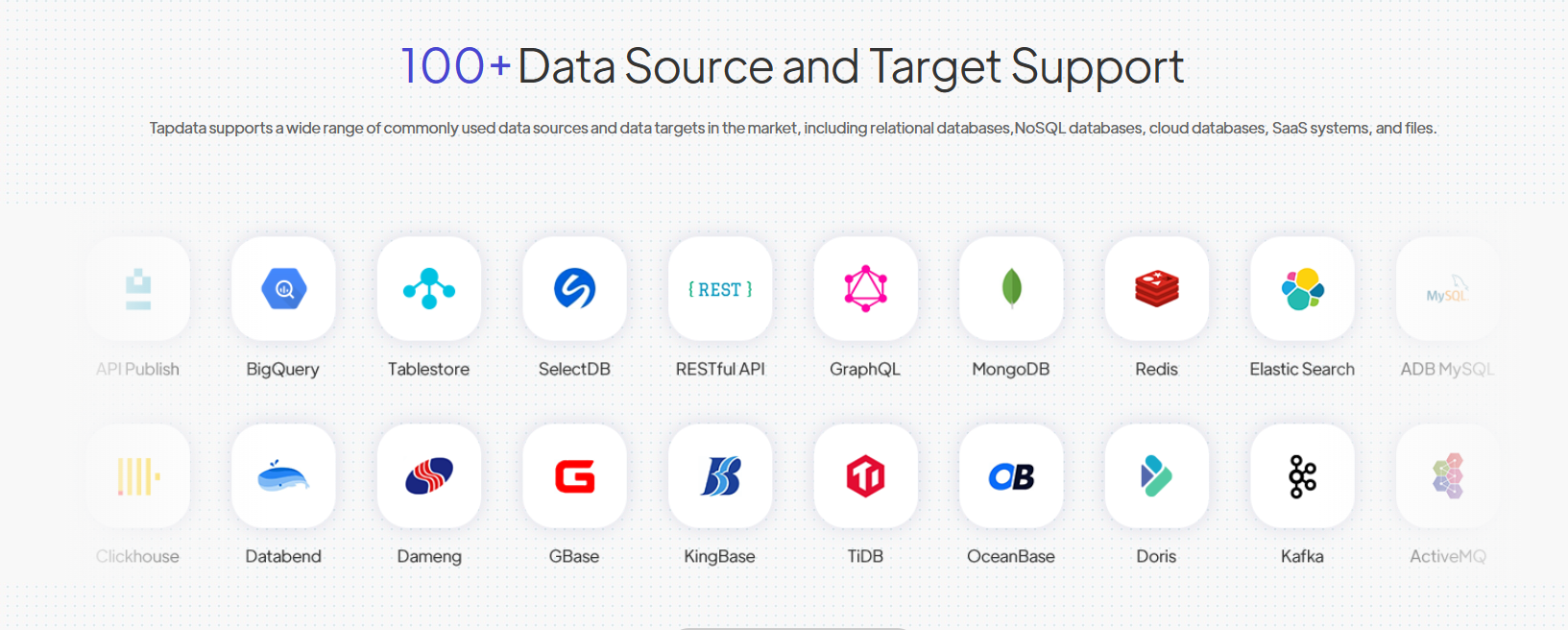Unlock Real-Time Data Integration with Tapdata
Unlock Real-Time Data Integration with Tapdata
Introduction to Tapdata
In today's data-driven world, businesses need a reliable and efficient way to integrate and process data from various sources. This is where Tapdata comes in – a modern data platform built for real-time data integration and services. With Tapdata, businesses can connect and process data from different sources with ease, breaking down data silos and unlocking the value of their data.
What is Tapdata?
Tapdata is a low-latency data movement platform that offers real-time data integration and services. It provides 100+ built-in connectors, supporting both cloud and on-premises deployment, making it easy for businesses to connect with various sources. The platform also offers flexible billing options, giving users the freedom to choose the best plan for their needs.
One of the key advantages of Tapdata is its no-code/low-code operations. Even non-technical users can easily deploy and operate the platform without needing extensive training or expertise. This makes it an ideal solution for businesses looking to streamline their operations without sacrificing efficiency or accuracy.
Another advantage of Tapdata is its high consistency in handling large volumes of data. Its low-latency architecture ensures that data moves quickly between sources, making it possible for businesses to access real-time insights that can drive decision-making processes.
Tapdata Connectors
Tapdata offers over 50 built-in connectors that allow users to connect with various sources such as databases, APIs, files, and more. These connectors are designed to be user-friendly, allowing even non-technical users to set up connections quickly and easily.
With Tapdata's cloud-based deployment option, users can also take advantage of pre-built integrations with popular cloud platforms such as AWS S3, Azure Blob Storage, Google Cloud Storage, Salesforce, Shopify, among others. For those who prefer on-premises deployment options instead or require custom integrations with specific systems or applications not covered by pre-built connectors; they can utilize RESTful APIs provided by the platform.
Connecting Data Sources and Syncing Data
In today's data-driven world, businesses have to deal with an overwhelming amount of data from various sources. To make sense of this data, it is crucial to integrate it into a single platform. Tapdata offers a modern data platform that simplifies the process of connecting and synchronizing data in real-time.
Connecting Data Sources
Tapdata provides 50+ built-in connectors that allow businesses to connect to various data sources such as databases, cloud storage, APIs, and more. These connectors are designed to work seamlessly with popular platforms like Salesforce, Google Analytics, Amazon S3, and many others.
Connecting a new data source to Tapdata is straightforward. First, you need to select the connector for your desired source from the list of available connectors. Next, you need to provide the necessary credentials or API keys for authentication. Once authenticated, Tapdata will automatically fetch the schema of your data source and display it in its interface.
From there on, you can configure how often you want Tapdata to fetch new data from your source. You can choose between different synchronization modes such as full load or incremental load depending on your use case. Additionally, you can apply filters or transformations to your data before syncing them with other destinations.
Syncing Data
After connecting your data sources with Tapdata, you can start syncing them with other destinations such as databases or cloud storage services like Amazon Redshift or Google Cloud Storage.
To sync your data with another destination using Tapdata is also simple. First, select the destination connector from the list of available connectors in Tapdata's interface. Then provide credentials for authentication and configure how often you want Tapdata to sync new records.
Tapdata supports different synchronization modes like insert-only or upsert (insert/update) depending on your use case. It also allows users to specify custom primary keys for their destination tables if needed.
One unique feature of Tapdata is its support for multi-destination syncs. This means that businesses can synchronize their data with multiple destinations simultaneously without having to write custom code or scripts.
Benefits of Choosing Tapdata for Real-Time Data Integration
As businesses continue to generate a large amount of data, the need for real-time data integration and services has become more critical. Tapdata offers a modern data platform built with low-latency data movement as its core advantage. Here are some of the benefits that make Tapdata stand out from other data platforms.
Low-Latency Data Movement
Tapdata's low-latency data movement ensures that businesses can integrate their data in real-time. This means that as soon as new data is generated, it is immediately available for processing and analysis by businesses. With Tapdata's low-latency capabilities, businesses can make informed decisions based on the most up-to-date information available.

Low-latency data movement also allows businesses to reduce their time-to-insight. Instead of waiting hours or even days for batch processing of their data, they can access insights in near real-time. This speed is especially important in industries such as finance or healthcare where quick decision-making can be critical.
In addition to providing real-time integration capabilities, Tapdata's low-latency data movement also ensures high levels of reliability and consistency. Businesses can trust that their data will always be available when they need it.
Flexible Billing Options
Tapdata offers flexible billing options that allow businesses to pay only for what they use. This means that companies do not have to commit to a fixed subscription plan or a specific number of connectors upfront. Instead, they pay only for the amount of data processed and stored by Tapdata.
This flexibility makes Tapdata an attractive option for small and medium-sized enterprises (SMEs) who may not have large budgets for expensive enterprise-level solutions but still require reliable and scalable real-time integration capabilities.

No-Code/Low-Code Operations
One of the key advantages of using Tapdata is its no-code/low-code operations approach. With this approach, businesses do not need a team of highly skilled developers or IT professionals to set up and maintain their integration processes. Instead, business analysts or other non-technical users can easily configure integrations through an intuitive user interface.
This approach reduces the complexity involved in setting up integrations while also reducing the time required to deploy them. It also ensures that businesses are not reliant on a single technical resource who may leave the company or be unavailable when needed.
Testimonials from Companies Using Tapdata
Tapdata has been helping businesses across industries to break down data silos, unlock the value of their data, and drive digital transformation. Here are some testimonials from companies that are using Tapdata for real-time data integration:
Company A
Company A is a leading e-commerce company that needed to process a large volume of customer data in real-time. They were looking for a solution that could connect different data sources and ensure high data consistency. After evaluating several options, they chose Tapdata.
With Tapdata's easy deployment and no-code/low-code operations, Company A was able to quickly set up their real-time data integration pipeline. They used Tapdata's built-in connectors to sync customer data from various sources such as social media platforms, email campaigns, and website interactions.
The benefits of using Tapdata for Company A were significant. They were able to deliver personalized recommendations to customers in real-time, which resulted in higher conversion rates and increased customer satisfaction. They also gained insights into customer behavior that helped them optimize their marketing campaigns.
Company B
Company B is a global logistics company that needed to track shipments in real-time across different regions. They had multiple legacy systems that were not compatible with each other, which made it difficult to get a unified view of their operations.
Tapdata provided an end-to-end solution for Company B's real-time tracking needs. They used Tapdata's cloud-based platform to connect their legacy systems and create a unified view of their shipment data. With Tapdata's flexible billing options, they were able to scale up or down based on their business needs.
The benefits of using Tapdata for Company B were significant as well. They were able to improve the accuracy of their shipment tracking and reduce delivery times. This helped them gain a competitive advantage in the market and increase customer loyalty.
In conclusion, Tapdata is an ideal solution for businesses looking for real-time data integration and services. With its low-latency data movement capabilities, built-in connectors, flexible deployment options, and no-code/low-code operations, it provides businesses with the tools they need to break down data silos and drive digital transformation. The testimonials from companies using Tapdata demonstrate its effectiveness in delivering tangible results such as higher conversion rates, increased customer satisfaction, improved operational efficiency, and competitive advantage.
See Also
Effortless Real-Time Data Integration with Tapdata
Real-Time Syncing: MySQL to ClickHouse with Tapdata
Real-Time Syncing MySQL Data to BigQuery with Tapdata



